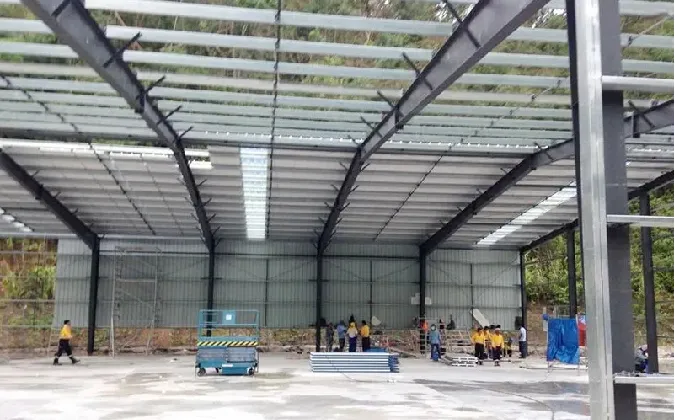- Afrikaans
- Albanian
- Amharic
- Arabic
- Armenian
- Azerbaijani
- Basque
- Belarusian
- Bengali
- Bosnian
- Bulgarian
- Catalan
- Cebuano
- Corsican
- Croatian
- Czech
- Danish
- Dutch
- English
- Esperanto
- Estonian
- Finnish
- French
- Frisian
- Galician
- Georgian
- German
- Greek
- Gujarati
- Haitian Creole
- hausa
- hawaiian
- Hebrew
- Hindi
- Miao
- Hungarian
- Icelandic
- igbo
- Indonesian
- irish
- Italian
- Japanese
- Javanese
- Kannada
- kazakh
- Khmer
- Rwandese
- Korean
- Kurdish
- Kyrgyz
- Lao
- Latin
- Latvian
- Lithuanian
- Luxembourgish
- Macedonian
- Malgashi
- Malay
- Malayalam
- Maltese
- Maori
- Marathi
- Mongolian
- Myanmar
- Nepali
- Norwegian
- Norwegian
- Occitan
- Pashto
- Persian
- Polish
- Portuguese
- Punjabi
- Romanian
- Russian
- Samoan
- Scottish Gaelic
- Serbian
- Sesotho
- Shona
- Sindhi
- Sinhala
- Slovak
- Slovenian
- Somali
- Spanish
- Sundanese
- Swahili
- Swedish
- Tagalog
- Tajik
- Tamil
- Tatar
- Telugu
- Thai
- Turkish
- Turkmen
- Ukrainian
- Urdu
- Uighur
- Uzbek
- Vietnamese
- Welsh
- Bantu
- Yiddish
- Yoruba
- Zulu
Dec . 13, 2024 14:56 Back to list
The Rise of Complex Steel Buildings A Contemporary Architectural Marvel
In recent years, the construction industry has witnessed a paradigm shift, with complex steel buildings emerging at the forefront of architectural innovation. These structures not only reflect the advancements in engineering and design but also highlight the significance of sustainability and efficiency in modern construction practices. This article explores the evolution, advantages, and future of complex steel buildings.
Historically, steel has been a crucial material in construction, valued for its strength, durability, and flexibility. However, the arrival of complex steel buildings has redefined how architects and engineers perceive and utilize steel. Unlike conventional buildings, which often prioritize simple forms and straightforward designs, complex steel buildings embrace intricate shapes and multifaceted structures. This transformation is underpinned by advancements in computer-aided design (CAD) and Building Information Modeling (BIM), which allow for precise modeling and visualization of complex geometries.
One of the most striking examples of complex steel architecture is the CCTV Headquarters in Beijing, designed by Rem Koolhaas and the Office for Metropolitan Architecture (OMA). The building is characterized by its unconventional, looped shape that challenges traditional perceptions of skyscrapers. It showcases how steel can be manipulated to create not only functional spaces but also striking visual landmarks. Such designs are made possible through meticulous engineering and sophisticated fabrication techniques, which have become increasingly prevalent in the industry.
The advantages of complex steel buildings extend beyond aesthetics. Steel is inherently adaptable, allowing for modifications and expansions that other materials may not accommodate easily. This adaptability is particularly valuable in urban environments where land is limited and the demand for multifunctional spaces is increasing. For instance, mixed-use developments, which combine residential, commercial, and recreational areas, benefit significantly from the versatility of steel design. Structures can be constructed with flexible layouts, ensuring that they can evolve alongside the needs of the community.
complex steel buildings

Another critical aspect of complex steel buildings is their sustainability. With a growing emphasis on minimizing carbon footprints, many architects and developers are turning to steel for its eco-friendly properties. Steel is recyclable, and leveraging recycled steel reduces the need for new materials, subsequently lowering energy consumption and waste. Additionally, advanced construction methods, such as prefabrication, enhance efficiency by allowing components to be manufactured off-site, thus reducing on-site waste and construction time.
Moreover, complex steel buildings often integrate green technologies to further their sustainability goals. Features such as green roofs, solar panels, and intelligent energy management systems are becoming standard in these modern buildings. By combining innovative design with eco-friendly practices, complex steel buildings can achieve high-performance ratings, such as LEED (Leadership in Energy and Environmental Design), contributing to a more sustainable future.
As we look to the future, the trend of complex steel buildings is likely to continue expanding. The exploration of new technologies, such as 3D printing and modular construction, promises even greater possibilities for design and fabrication. Architects are encouraged to push beyond conventional boundaries, crafting structures that not only meet the needs of their occupants but also resonate with the surrounding environment.
In conclusion, complex steel buildings represent a dynamic convergence of art, science, and sustainability. They highlight the remarkable capabilities of steel as a building material while fostering innovative design principles that can adapt to the evolving landscape of urban living. As we advance into a new era of construction, the continued exploration and implementation of complex steel architecture will undoubtedly play a pivotal role in shaping the cities of tomorrow. Embracing this trend not only addresses the practical needs of today but also paves the way for a more sustainable and aesthetically engaging future in architecture.
-
How Do Prefabricated Steel Structures Transform Modern Construction?
NewsJul.14,2025
-
How Do Prefabricated Metal Buildings Redefine Modern Construction?
NewsJul.14,2025
-
How Do Prefab Insulated Metal Buildings and Steel Structures Revolutionize Modern Construction?
NewsJul.14,2025
-
How Do Pre - Engineered Steel Structures Redefine Modern Construction?
NewsJul.14,2025
-
Advancing Modular Construction with Prefabricated Metal Structures
NewsJul.14,2025
-
Advancing Industrial Infrastructure with Prefabricated Steel Solutions
NewsJul.14,2025
Products categories
Our Latest News
We have a professional design team and an excellent production and construction team.












